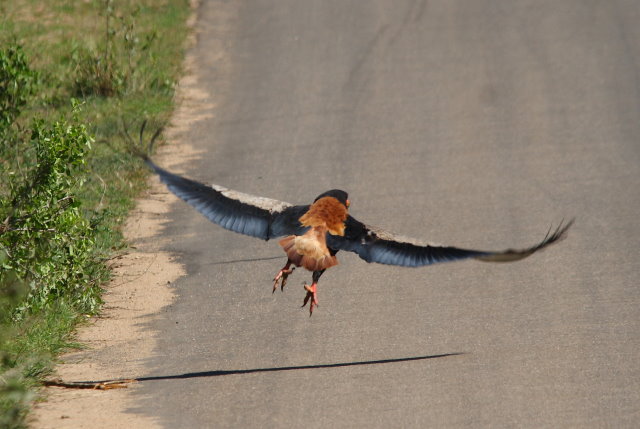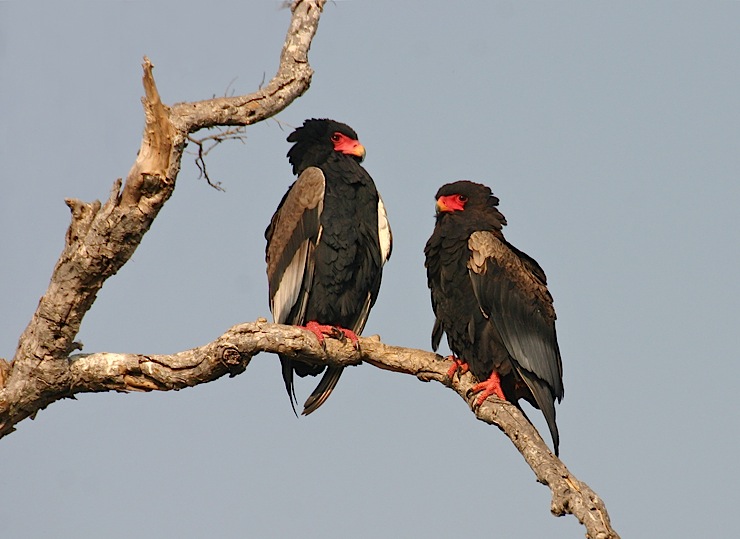
Bateleur (Terathopius ecaudatus)
- Penga Ndlovu
- Posts: 2400
- Joined: Thu May 31, 2012 9:38 pm
- Country: Bush area
- Location: Grietjie Nature Reserve, Phalaborwa
- Contact:
Re: Bird Photos - Not Park Specific
Juvenile Bateleur


"Longing for the bush is a luxury many have.
Living in the bush is a luxury that only a few have"
Living in the bush is a luxury that only a few have"
- Bushveld Jock
- Posts: 2001
- Joined: Sat Jun 02, 2012 3:52 pm
- Contact:
Bateleur (Terathopius ecaudatus)
Bateleur
Terathopius ecaudatus
Berghaan [Afrikaans]; Ingqanga [Xhosa]; iNgqungqulu [Zulu]; Sipupa [Kwangali]; Chapungu [Shona]; Ingculungculu [Swazi]; Ximongwe [Tsonga]; Ntsu, Pêtlêkê [Tswana]; bateleur, goochelaar [Dutch]; Bateleur des savanes [French]; Gaukler [German]; Águia-bailarina [Portuguese]
Distribution and habitat:
Occurs across sub-Saharan Africa, excluding the lowland forest of West Africa and the DRC. In southern Africa, it is locally common in Mozambique, Zimbabwe, Botswana and northern and eastern Namibia and South Africa. It generally prefers savanna and woodland habitats, such as arid Acacia savanna and miombo (Brachystegia) woodland and Mopane (Colosphermum mopane) woodland, especially with long grass. It may also move into drainage-line woodland in semi-desert shrubland.
Movements and migrations:
Adults are largely sedentary, however juveniles disperse from their parents territories once they become independent, sometimes travelling great distances in search a territory. Juveniles may also aggregate in their hundreds at certain sites in southern Africa, suggesting that they may make large-scale movements.
Food:
It is mainly a scavenger, although about a third of its time is spent hunting, feeding on a variety of animals. It usually hunts aerially, sometimes flying to veld fires, as it feeds on animals killed by the heat or fleeing from it. It sometimes flies along roads in search of road kills to feed on. The following food items have been recorded in its diet, either scavenged or hunted:
Mammals:
 Rodents
Rodents
 Pedetes capensis (Springhare)
Pedetes capensis (Springhare)
 Lepus (hares)
Lepus (hares)
 Ictonyx striatus (Striped polecat)
Ictonyx striatus (Striped polecat)
 ungulates (always scavenged)
ungulates (always scavenged)
 mongooses
mongooses
 genets
genets
Birds:
 Streptopelia capicola (Cape Turtle Dove)
Streptopelia capicola (Cape Turtle Dove)
 Streptopelia senegalensis (Laughing Dove)
Streptopelia senegalensis (Laughing Dove)
 Turtur chalcospilos (Emerald-spotted wood-dove)
Turtur chalcospilos (Emerald-spotted wood-dove)
 Coracias caudatus (Lilac-breasted roller)
Coracias caudatus (Lilac-breasted roller)
 Tockus leucomelas (Southern yellow-billed hornbill)
Tockus leucomelas (Southern yellow-billed hornbill)
 Lamprotornis (glossy starlings)
Lamprotornis (glossy starlings)
 Bubalornis niger (Redbilled Buffalo Weaver)
Bubalornis niger (Redbilled Buffalo Weaver)
 Quelea quelea (Red-billed quelea)
Quelea quelea (Red-billed quelea)
 Prionops plumatus (White-crested helmet-shrike)
Prionops plumatus (White-crested helmet-shrike)
 Elanus caeruleus (Black-shouldered kite)
Elanus caeruleus (Black-shouldered kite)
 Falco biarmicus (Lanner falcon)
Falco biarmicus (Lanner falcon)
 Peliperdix coqui (Coqui francolin)
Peliperdix coqui (Coqui francolin)
 Pternistis natalensis (Natal spurfowl)
Pternistis natalensis (Natal spurfowl)
 Pternistis swainsonii (Swainson's spurfowl)
Pternistis swainsonii (Swainson's spurfowl)
 Scleroptila shelleyi (Shelley's francolin)
Scleroptila shelleyi (Shelley's francolin)
 Lophotis ruficrista (Red-crested korhaan)
Lophotis ruficrista (Red-crested korhaan)
 Corythaixoides concolor (Grey go-away-bird)
Corythaixoides concolor (Grey go-away-bird)
 Numida meleagris (Helmeted guineafowl)
Numida meleagris (Helmeted guineafowl)
 Vanellus coronatus (Crowned lapwing)
Vanellus coronatus (Crowned lapwing)
 Rhinoptilus chalcopterus (Bronze-winged courser)
Rhinoptilus chalcopterus (Bronze-winged courser)
 chicks
chicks Vanellus coronatus (Crowned lapwing)
Vanellus coronatus (Crowned lapwing)
 Vanellus lugubris (Senegal lapwing)
Vanellus lugubris (Senegal lapwing)
Reptiles:
 Dendroaspis (mambas)
Dendroaspis (mambas)
 Bitis arietans (Puff adder)
Bitis arietans (Puff adder)
 Psammophis (grass snakes)
Psammophis (grass snakes)
 lizards
lizards Varanus (monitor lizards)
Varanus (monitor lizards)
 Gerrhosaurus (plated lizards)
Gerrhosaurus (plated lizards)
 tortoises and terrapins (Chelonia)
tortoises and terrapins (Chelonia)
 chameleons (Chamaeleonidae)
chameleons (Chamaeleonidae)
◦fish (caught when water is shallow)
◦frogs
•Insects
Breeding
Monogamous, territorial solitary nester, performing spectacular aerial courtship displays in which the male repeatedly dives at and chases the female, who often rolls to present her talons. These acrobatic flights give the bird its name: "bateleur" is the French word for tight-rope walker.
•The nest is built mainly by the female in roughly six weeks, consisting of a thin stick platform about 45-100 cm wide and 25-100 cm deep, with a cup set into it, which is lined with green leaves. It is typically placed in the fork of a large leafy tree, especially Knob thorn (Acacia nigrescens), Sycomore fig (Ficus sycomorus) and Jackal-berry (Diospyros mespiliformisi). It may rarely take over the nest of a Wahlberg's eagle, instead of building it's own.
•Egg-laying season is year-round, peaking from January-April.
•It lays a single egg, which is incubated by both sexes for roughly 55 days.
•Both sexes feed and brood the chick, taking turns to care for their young in the early nestling period. Later, they only visit the nest to give their young food; the chick takes its first flight at about 95-125 days old, becoming fully independent about four months later.
Threats:
Not globally threatened, but Vulnerable in South Africa and Namibia, as its population in these countries is decreasing and it's range is contracting. It is now restricted to protected areas, as it often falls victim to persecution as well as dying from poisoned bait put out for jackals.
References:
Hockey PAR, Dean WRJ and Ryan PG 2005. Roberts - Birds of southern Africa, VIIth ed. The Trustees of the John Voelcker Bird Book Fund, Cape Town.
Information from: http://www.biodiversityexplorer.org/bir ... udatus.htm
Old Believes:
In indigenous cultures the bateleur is a bird of omen. The Zulu refer to it as the “warrior bird” because the sound of its wings are reminiscent of warriors beating their spears against their shields.
In Xhosa folklore, to kill a bateleur is to invite trouble or war, and a phrase to commemorate the passing away of a great man is to say, “The bateleur is dead”.
Terathopius ecaudatus
Berghaan [Afrikaans]; Ingqanga [Xhosa]; iNgqungqulu [Zulu]; Sipupa [Kwangali]; Chapungu [Shona]; Ingculungculu [Swazi]; Ximongwe [Tsonga]; Ntsu, Pêtlêkê [Tswana]; bateleur, goochelaar [Dutch]; Bateleur des savanes [French]; Gaukler [German]; Águia-bailarina [Portuguese]
Distribution and habitat:
Occurs across sub-Saharan Africa, excluding the lowland forest of West Africa and the DRC. In southern Africa, it is locally common in Mozambique, Zimbabwe, Botswana and northern and eastern Namibia and South Africa. It generally prefers savanna and woodland habitats, such as arid Acacia savanna and miombo (Brachystegia) woodland and Mopane (Colosphermum mopane) woodland, especially with long grass. It may also move into drainage-line woodland in semi-desert shrubland.
Movements and migrations:
Adults are largely sedentary, however juveniles disperse from their parents territories once they become independent, sometimes travelling great distances in search a territory. Juveniles may also aggregate in their hundreds at certain sites in southern Africa, suggesting that they may make large-scale movements.
Food:
It is mainly a scavenger, although about a third of its time is spent hunting, feeding on a variety of animals. It usually hunts aerially, sometimes flying to veld fires, as it feeds on animals killed by the heat or fleeing from it. It sometimes flies along roads in search of road kills to feed on. The following food items have been recorded in its diet, either scavenged or hunted:
Mammals:
Birds:
Reptiles:
◦fish (caught when water is shallow)
◦frogs
•Insects
Breeding
Monogamous, territorial solitary nester, performing spectacular aerial courtship displays in which the male repeatedly dives at and chases the female, who often rolls to present her talons. These acrobatic flights give the bird its name: "bateleur" is the French word for tight-rope walker.
•The nest is built mainly by the female in roughly six weeks, consisting of a thin stick platform about 45-100 cm wide and 25-100 cm deep, with a cup set into it, which is lined with green leaves. It is typically placed in the fork of a large leafy tree, especially Knob thorn (Acacia nigrescens), Sycomore fig (Ficus sycomorus) and Jackal-berry (Diospyros mespiliformisi). It may rarely take over the nest of a Wahlberg's eagle, instead of building it's own.
•Egg-laying season is year-round, peaking from January-April.
•It lays a single egg, which is incubated by both sexes for roughly 55 days.
•Both sexes feed and brood the chick, taking turns to care for their young in the early nestling period. Later, they only visit the nest to give their young food; the chick takes its first flight at about 95-125 days old, becoming fully independent about four months later.
Threats:
Not globally threatened, but Vulnerable in South Africa and Namibia, as its population in these countries is decreasing and it's range is contracting. It is now restricted to protected areas, as it often falls victim to persecution as well as dying from poisoned bait put out for jackals.
References:
Hockey PAR, Dean WRJ and Ryan PG 2005. Roberts - Birds of southern Africa, VIIth ed. The Trustees of the John Voelcker Bird Book Fund, Cape Town.
Information from: http://www.biodiversityexplorer.org/bir ... udatus.htm
Old Believes:
In indigenous cultures the bateleur is a bird of omen. The Zulu refer to it as the “warrior bird” because the sound of its wings are reminiscent of warriors beating their spears against their shields.
In Xhosa folklore, to kill a bateleur is to invite trouble or war, and a phrase to commemorate the passing away of a great man is to say, “The bateleur is dead”.
Last edited by Bushveld Jock on Tue Oct 08, 2013 8:04 pm, edited 1 time in total.
Kgalagadi: Dec 2015
KNP Maroela, Shingwedzi & Pretoriuskop: March 2016
KNP Maroela, Shingwedzi & Pretoriuskop: March 2016
-
Duke
Re: Bateleur - Bird of the Month October 2013
Great choice BJ 
I quote from "The Killer Birds of Kruger" by Brett Hilton Barber and Lou Arthur:
I quote from "The Killer Birds of Kruger" by Brett Hilton Barber and Lou Arthur:
The bateleur is often the first bird at a kill and is known to go straight for the eyeballs of the dead animal.There is a record of a bateleur attacking a python just to get to its eyeballs
- Sprocky
- Posts: 7110
- Joined: Sat May 19, 2012 12:29 pm
- Country: South Africa
- Location: Grietjie Private Reserve
- Contact:
Re: Bateleur - Bird of the Month October 2013

Sometimes it’s not until you don’t see what you want to see, that you truly open your eyes.
- nan
- Posts: 26476
- Joined: Thu May 31, 2012 9:41 pm
- Country: Switzerland
- Location: Central Europe
- Contact:
Re: Bateleur - Bird of the Month October 2013
Kruger 2009-2011
3 different Eagles and Vulture are waiting... for the Leopard leaving the Impala alone... in the tree
 just behind Nsemani
just behind Nsemani
 with a kill, the car didn't stop... there was "official" Inside
with a kill, the car didn't stop... there was "official" Inside 


3 different Eagles and Vulture are waiting... for the Leopard leaving the Impala alone... in the tree
 just behind Nsemani
just behind Nsemani with a kill, the car didn't stop... there was "official" Inside
with a kill, the car didn't stop... there was "official" Inside 
Kgalagadi lover… for ever
https://safrounet.piwigo.com/
https://safrounet.piwigo.com/
- Flutterby
- Posts: 44029
- Joined: Sat May 19, 2012 12:28 pm
- Country: South Africa
- Location: Gauteng, South Africa
- Contact:
Re: Bateleur - Bird of the Month October 2013
August 2013 near Talamati
3 Immature Batleurs together
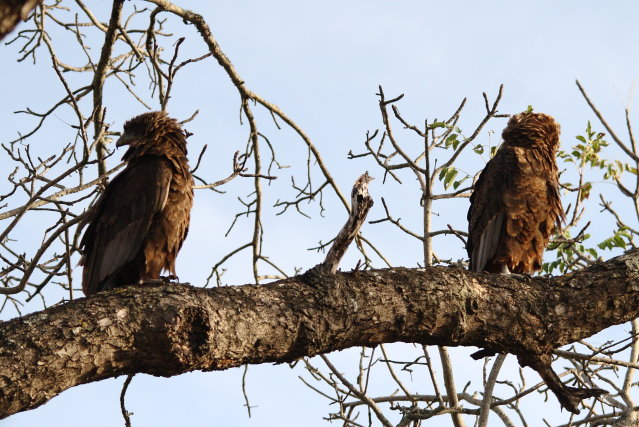
This one's cere is just starting to turn red.
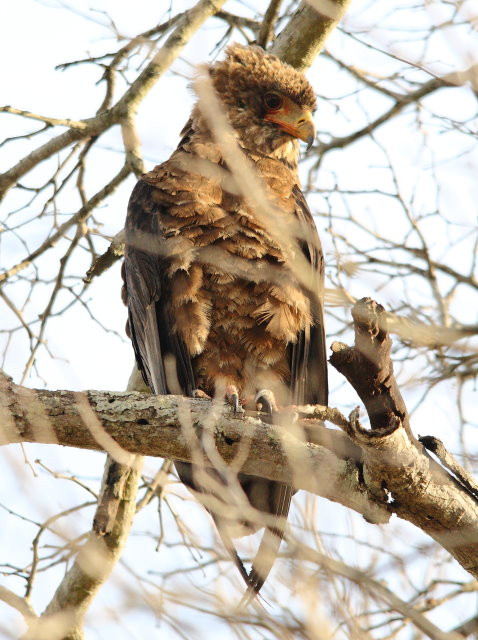

3 Immature Batleurs together

This one's cere is just starting to turn red.


- Sprocky
- Posts: 7110
- Joined: Sat May 19, 2012 12:29 pm
- Country: South Africa
- Location: Grietjie Private Reserve
- Contact:
Re: Bateleur - Bird of the Month October 2013
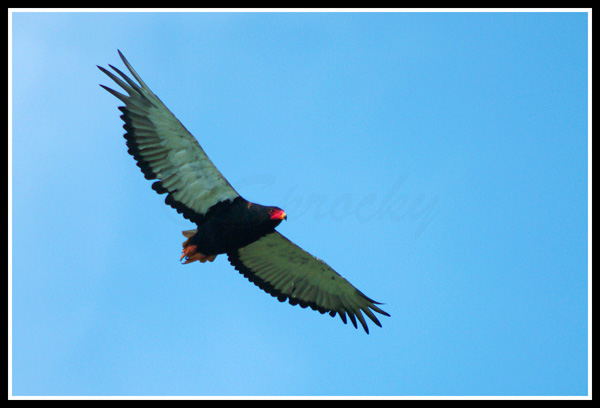
Sometimes it’s not until you don’t see what you want to see, that you truly open your eyes.
- Sprocky
- Posts: 7110
- Joined: Sat May 19, 2012 12:29 pm
- Country: South Africa
- Location: Grietjie Private Reserve
- Contact:
Re: Bateleur - Bird of the Month October 2013

Sometimes it’s not until you don’t see what you want to see, that you truly open your eyes.



